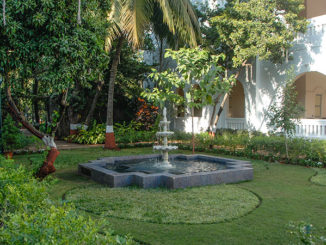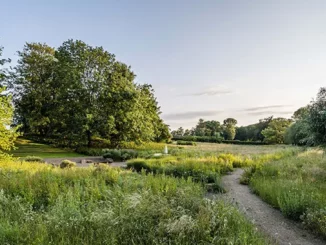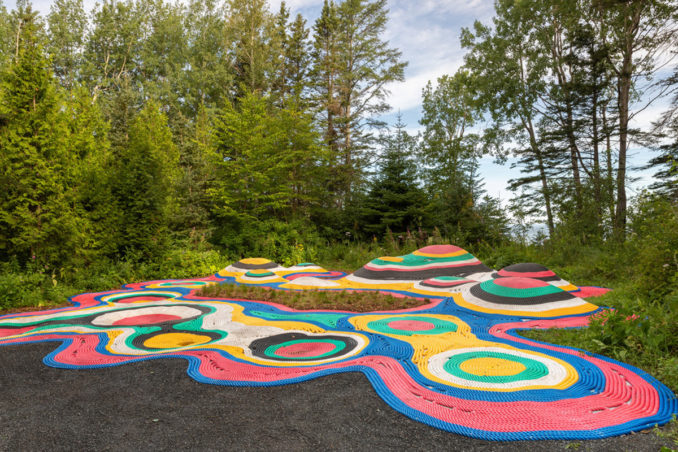
The 2020 edition of the International Garden Festival at the Reford Gardens was a discreet event in this very special year, which will remain anchored in our memories, both individually and collectively. Although the five design teams, chosen from among 200 following our international call for applications, were unable to travel to Grand-Métis in June, the Festival team nonetheless built their installations so that visitors of the Reford Gardens could enjoy the “métissages” they had imagined.
Métisages, “cross-breeding”, theme of the 2020 edition, in the context of contemporary gardens can be of practices (landscape architecture, garden design, architecture, visual arts, industrial design, cuisine and other fields of creative expression), plants (native or exotic) and materials (natural and manufactured). This mixity of approaches enriches and excites, creating new opportunities for exploration.
New Gardens 2020
Augmented Grounds by Soomeen Hahm, Architect, Jaeheon Jung, Architect and Yumi Lee, Landscape Architect – Seoul (South Korea)
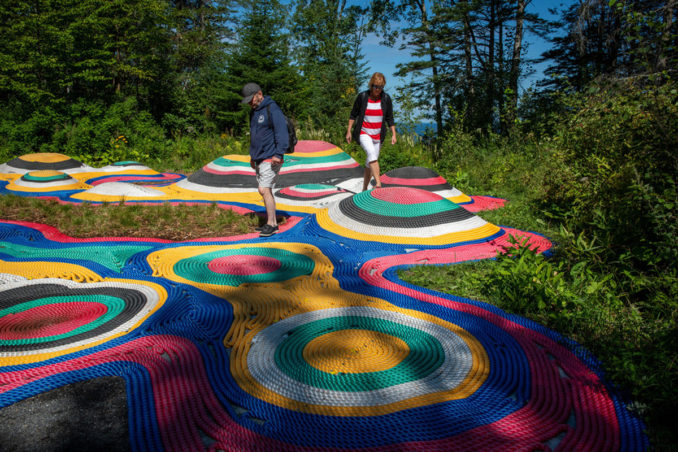
Augmented Grounds is inspired by the traditional sash of the Métis nation of the Western Plains. The garden represents harmony through colourful ropes that are tightly laid on top of sculpted terrain.
The designers are experts in design research and practice interested in exploring harmonious ecology of humans, computers and machines. They are currently focusing on ways of constructing complex forms to develop unique construction processes that cannot be done entirely by automation nor by human labour.
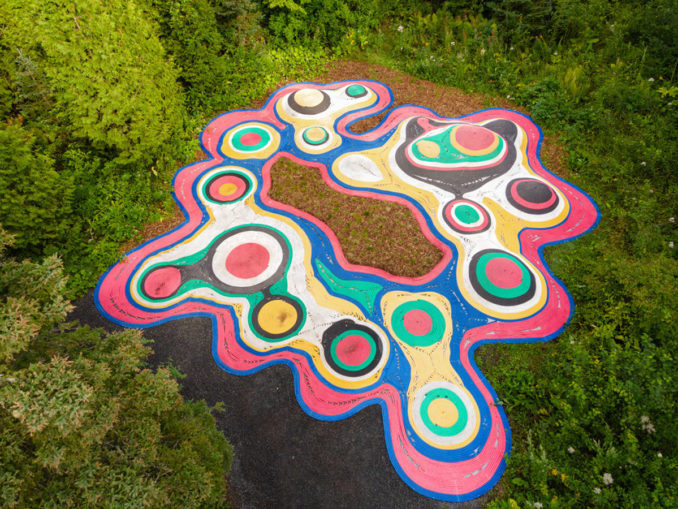
Corps de resonance by Charlotte Barbeau, Designer, Leila Desrosiers, Designer, Félix Roy, Environmental Designer and Jean-Benoit Trudelle, Intern in architecture – Montreal (Quebec) Canada
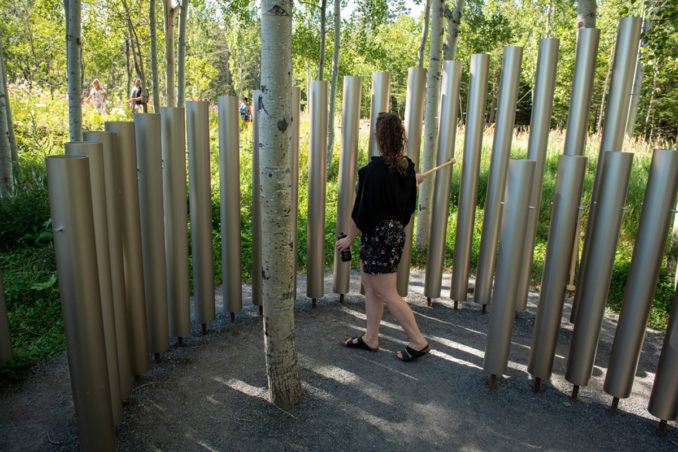
This musical folly takes form in a forest glade. Visitors move in and around this giant instrument that comes to life in the playing, vibrating along with the sounds of the forest.
Charlotte Barbeau, Leila Desrosiers and Félix Roy are environmental designers, graduates of the École de design de l’Université du Québec à Montréal (UQAM). Jean-Benoit Trudelle has a Master’s degree in architecture from the Université de Montréal. They came together to work on this project as a multidisciplinary team with the ability to create objects, architecture and landscape.
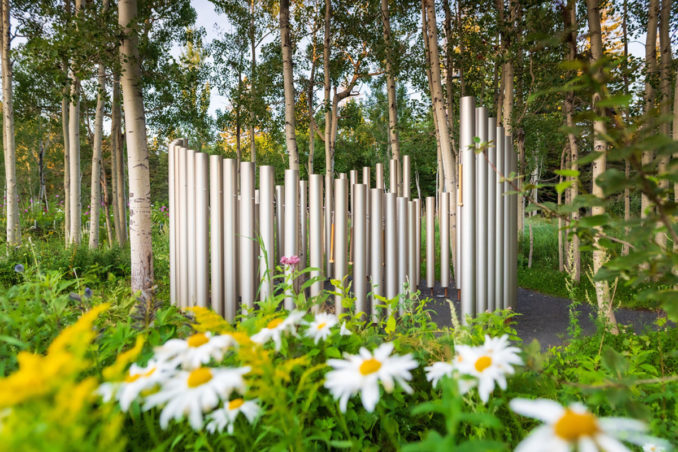
ENTWINE by Waiyee Chou, Landscape Architect and Carlos Portillo, Landscape Architect – Toronto (Ontario) and Montreal (Quebec) Canada
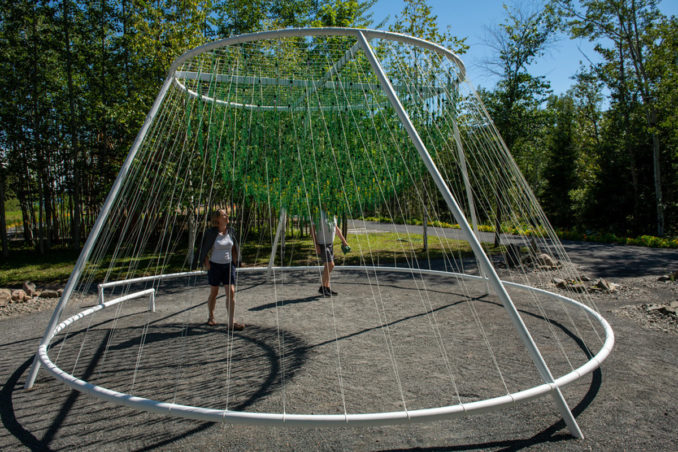
Entwine incorporates the ancient knot-tying technique of macramé to highlight the varieties of plants hybridized for horticulture. Inside a spiral, visitors are free to wander between suspended vessels and become entwined with the structure’s cords.
Waiyee Chou and Carlos Portillo are graduates of the Master of Landscape Architecture program at the University of Toronto. Waiyee worked at Urban Strategies, the Urban Design Section of the City of Toronto and with Forest and Field Landscape Architecture. Carlos is a landscape architect who works at Claude Cormier et Associés. He is currently working on the design and construction of a park for the downtown area of Toronto.
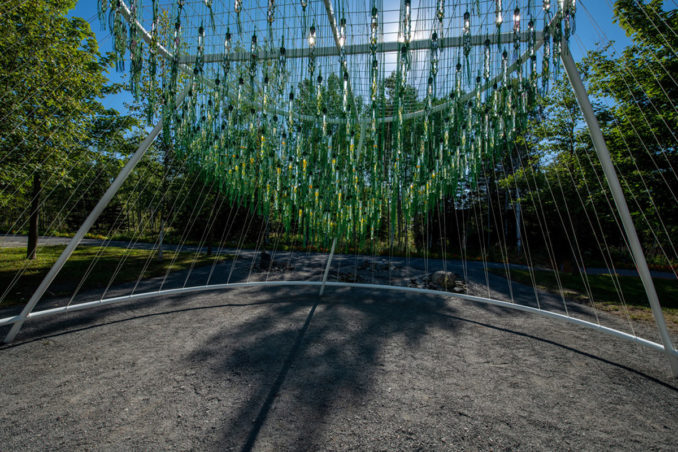
Forêt corallienne by Lucie Bulot, Architect and Dylan Collins, Designer – Montreal (Quebec) Canada
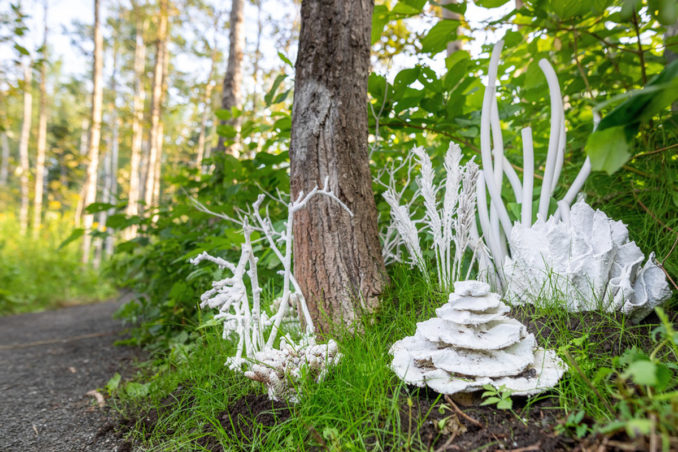
Forêt corallienne is a coral forest of a different kind. A community of limestone creatures takes root in the forest, a métissage of colour and form that creates an unusual landscape and a new hybrid world.
Lucie Bulot is an interior architect HMONP, a graduate of the École nationale supérieure d’architecture (ENSA), Paris-Val de Seine. Dylan Collins is an architect DE, graduating from l’ENSA Paris-Malaquais. They have lived and worked in Montreal since 2019. Their collaborative work began in 2017 with the creation of their garden installation Éternelles éphémères as part of the Festival International des Jardins de Chaumont-sur-Loire. In 2019, they created Neiges éternelles as part of the Passages Insolites event in Vieux Québec.
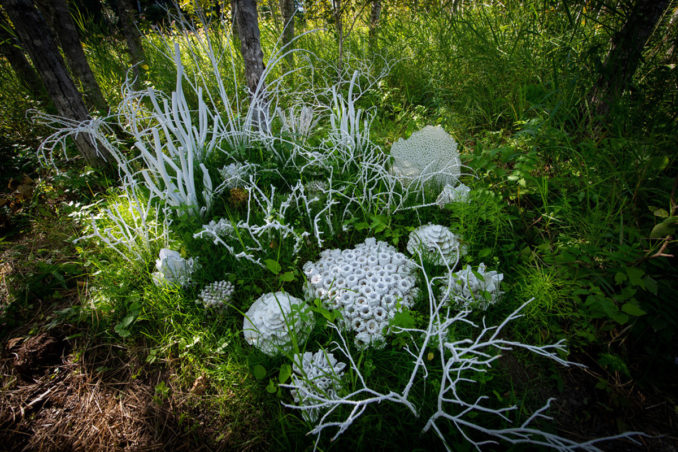
(Mé)Tissages by Duc Truong, Architect – Strasbourg (France)
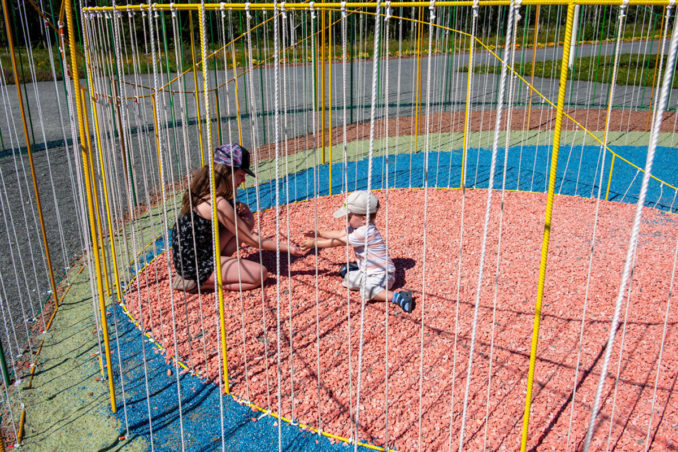
(Mé)Tissages is a woven landscape that invites visitors to enter through layers of coloured cords into a space created by the weaving of various elements. This experimental garden unites visitors through a shared experience of an installation that combines architecture and nature.
Duc Truong is an architect with a degree from the École d’architecture de Strasbourg. He co-founded the architectural studio Figures vives in 2017 and then left for Tokyo to work for Sou Fujimoto Architects, where he developed a genuine interest in the métissage of architecture and nature. After a year and a half in Japan, he returned to Europe and continued his apprenticeship in architecture at O.M.A. (Office for Metropolitan Architecture) in Rotterdam in the Netherlands.
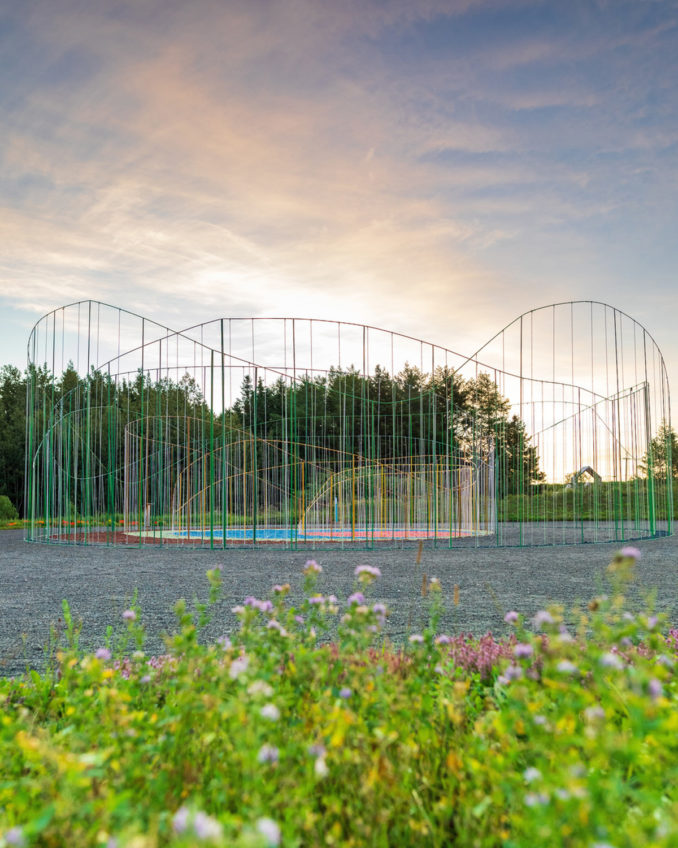
EXTRA-MUROS GARDENS at The 2020 edition of the International Garden Festival
Roof Line Garden by Julia Jamrozik and Coryn Kempster, Canadian artists and designers based in Buffalo, New York
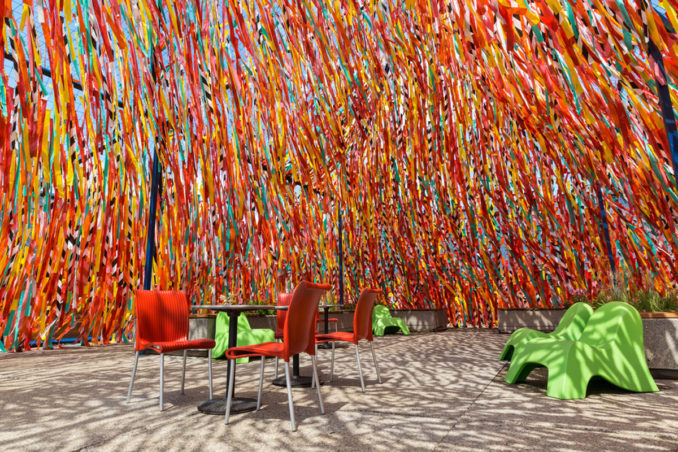
The barricade tape, which was seen in abundance this spring in public playgrounds to prevent access, is used here in reverse to attract visitors of the Musée de la civilisation to climb the steps leading to the rooftop terrace. The colors of this 3rd edition are inspired by a fishing fly of Elsie Reford, some of whose fishing accessories are presented in the MCQ’s exhibition, Fishing Stories.
Julia is an Assistant Professor in the Department of Architecture at the University of Buffalo, and Coryn is an Adjunct Assistant Professor. Working together since 2003, they strive to create objects, spaces and situations that transform everyday situations in a playful way. Their work has been awarded the League Prize by the Architectural League of New York in 2018.
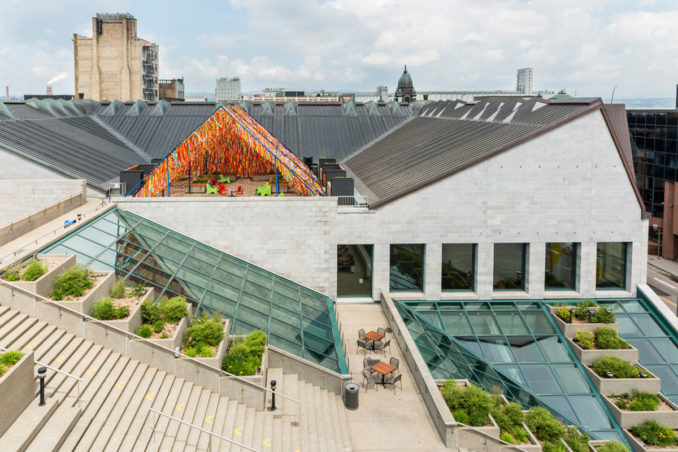
Ressac by Mégan Dorigo, Aurélie Martel, Audrey Sambeau and Mireille Simard, graduates of the Graduate Diploma in Event Design of the Université du Québec à Montréal (UQAM)
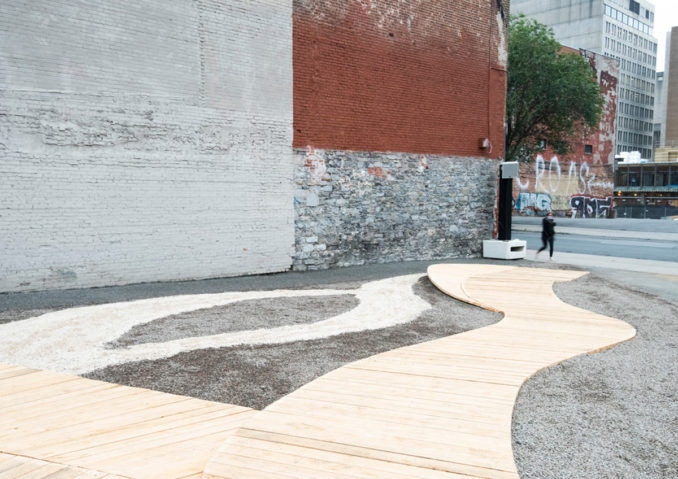
Resulting from a collaboration between UQAM, the Partenariat du Quartier des spectacles (PQDS) and the International Garden Festival, the Ressac installation will run until the end of October in the public space adjacent to the kiosk in the Saint-Laurent metro station in Montreal.
A dry garden represents the strike while a light-coloured wooden footbridge, reminiscent of driftwood, crosses it. Marrying the line of desire formed by passers-by, the sinuous layout is also inspired by the shape of the mouth of the Mitis River, next to the Reford Gardens, which flows into the river.
In the evening, the horizon clears. A film is projected on the brick wall which, during the day, is interposed between the passer-by’s gaze and the river, barely a kilometer further south. The projection transports us beyond this limit by initiating a conversation between body and river, embodied by the dancer Ivanie Aubin-Malo.
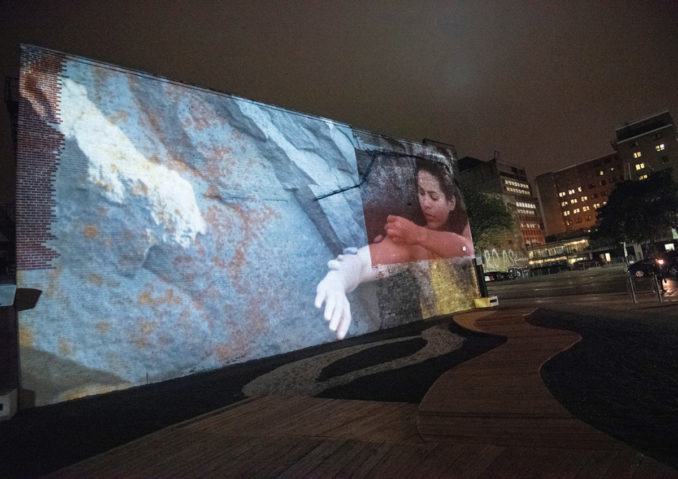
Find out more about the The 2020 edition of the International Garden Festival at http://www.internationalgardenfestival.com/

